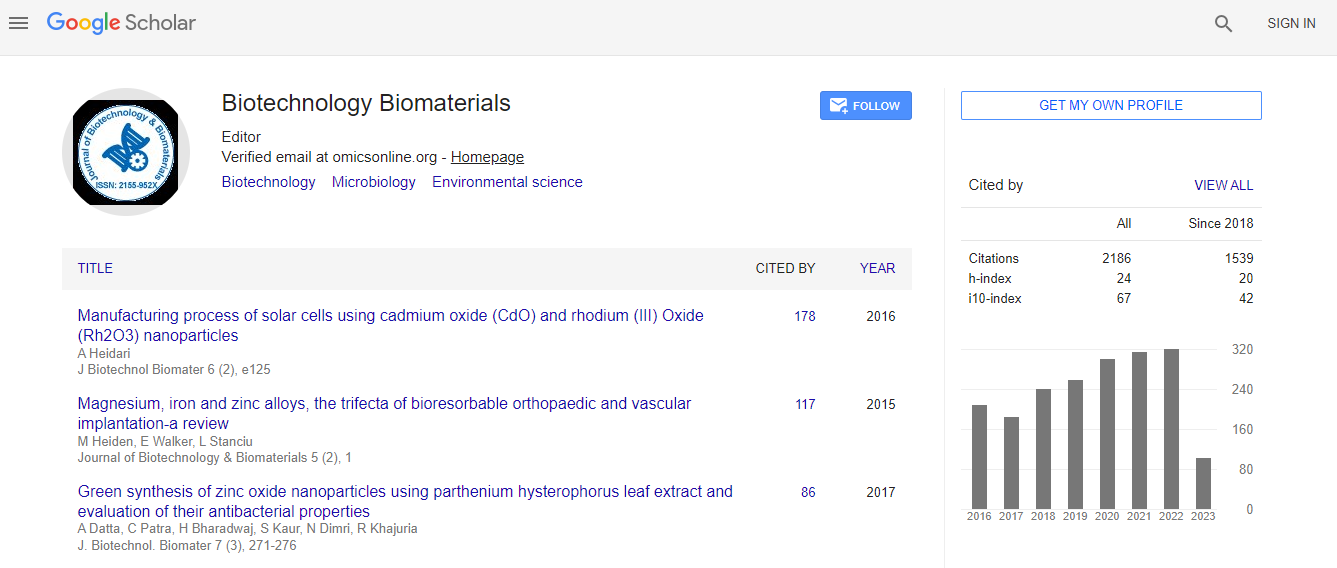Next-Generation Biocompatible Coatings: Enhancing Implant Integration with Nano-Textured Biomaterials
*Corresponding Author: Muhammad Haseeb, Centre for Organic Chemistry, School of Chemistry, University of the Punjab, Pakistan, Email: Muhammadhaseeb.h.34@gmail.comReceived Date: Nov 05, 2024 / Published Date: Nov 29, 2024
Citation: Muhammad H (2024) Next-Generation Biocompatible Coatings: Enhancing Implant Integration with Nano-Textured Biomaterials. J Biotechnol Biomater, 14: 422.
Copyright: © 2024 Muhammad H. This is an open-access article distributed under the terms of the Creative Commons Attribution License, which permits unrestricted use, distribution, and reproduction in any medium, provided the original author and source are credited
Abstract
The success of medical implants largely depends on their ability to integrate with surrounding tissue, minimizing the risk of rejection, inflammation, and complications. Recent advancements in the development of biocompatible coatings have focused on enhancing implant performance by improving osseointegration, soft tissue healing, and overall biostability. This review explores the latest innovations in next-generation coatings for implants, particularly the use of nano-textured biomaterials. Nano-structured surfaces, due to their unique properties at the molecular level, offer significant advantages in promoting cellular adhesion, proliferation, and differentiation. These coatings can mimic the extracellular matrix, thereby facilitating tissue regeneration and reducing the likelihood of implant failure. The paper discusses various materials used for coating implants, such as titanium, ceramics, and polymers, and their interaction with biological systems. Additionally, we address the challenges and future directions for the development of these coatings, focusing on the integration of bioactive molecules, controlled drug release, and the potential for personalized implant therapies. The findings underscore the critical role of nano-textured coatings in advancing implantable biomaterials for enhanced clinical outcomes.

 Spanish
Spanish  Chinese
Chinese  Russian
Russian  German
German  French
French  Japanese
Japanese  Portuguese
Portuguese  Hindi
Hindi 
